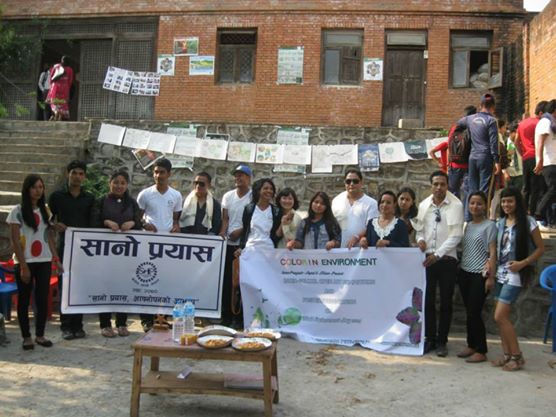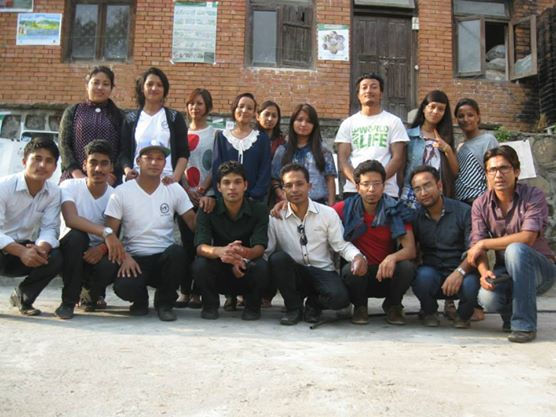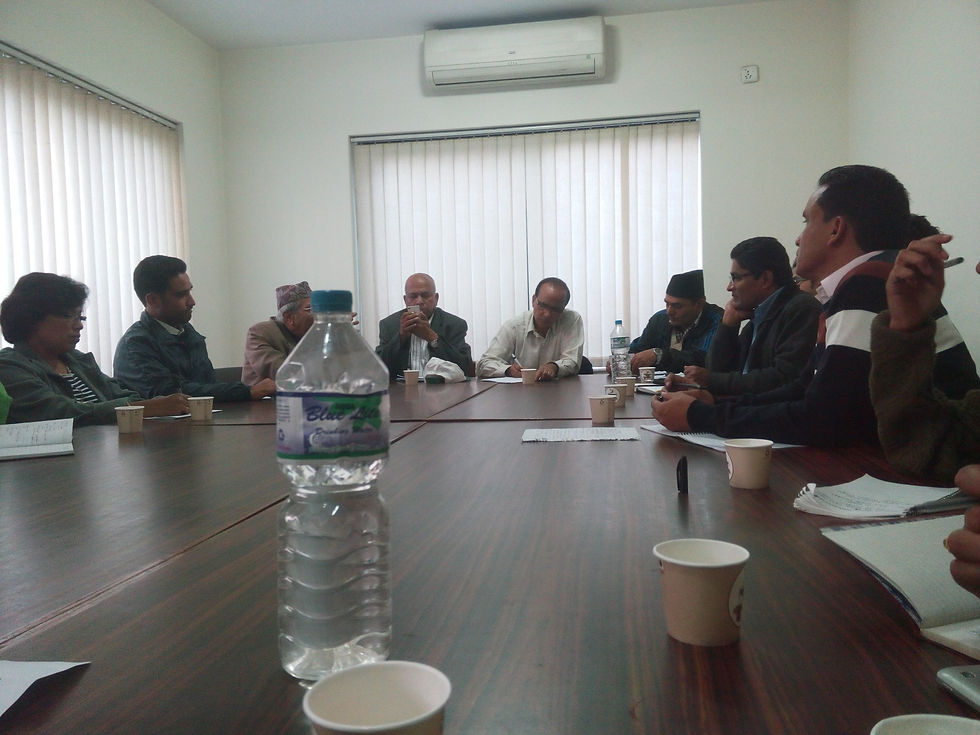Water Health Research
Microbiological research organization Nepal (MiRON) in collaboration with MiRON Laboratory & Research Center (MLRC) Pvt.Ltd. has successfully conducted a field based water health research project. The first phase of data collection was done in Gothatar, Pepsicola, Kathmandu.
RENTECH Symposium 2012
MiRON crew presented a prospective research project on bio-ethanol production from lignocellulytic wastes by use of microbial degradation in KU RENTECH 2012 Symposium organized by Renewal Nepal & Kathmandu University School of Engineering
Herbal Research in collaboration with Vedic Science and Technology Foundation Nepal
In collaboration with Vedic Science and Technology Foundation Nepal a research was conducted to evaluated the antimicrobial efficacy of water extract of Medicinal Aromatics Plants against pathogenic oral isolates.
Blood Donation at Santibatika, Ratna Park, KTM
Blood Donation Program was conducted at Shantibatika Ratna Park organized by MiRON
Prevalence of Protozoan parasites in the stool samples of the school children from Kirtipur Municipality
Stool samples were collected from the school children of Kirtipur Municipality. The laboratory work was conducted under the support of Kantipur Medical Hospital Tinkune, Kathmandu
Safe Water, Sanitation and Hyiene Project Kirtipur
Knowledge Attitude and Practices in Safe water sanitation and hygiene in secondary school children, their parents and respective teachers in Kirtipur was conducted under the support of Kirtipur Municipality and MiRON.
Talk Program on Microbiology and Oral Health
A Talk program was held in CEDA hall of Tribhuvan University under the chairperson of Dr. Sushil Koirala and in the presence of chief guest Dr. Pramod Arayal and Alenka Mam. The primary objective of this talk program was to enhance the collaborative work in microbiology with particular focus on oral microbiology and oral health.
Prevalence of dental caries and the impact of toothpastes and other factors in the oral health of School Children in Kathmandu valley
This study was carried out among school children of Kathmandu valley to determine the prevalence of dental caries and to know about the influence of other factors including toothpaste on their oral health. Study age group was 5-6 years and 12-13 years. This study also specifies the correlation between dental caries and other associated risk factors among the school children. Furthermore this study evaluates the antimicrobial efficacy of locally used toothpaste against primary and secondary infections causing dental pathogens. The study was conducted from December 2007 to May 2008. Altogether 638 students (325 of age group 12-13 years and 313 of age group 5-6 years) from 30 different schools of Kathmandu valley were included for the study. Stratified cluster sampling with proportional allocation was used while drawing schools samples. Dental status examination was done with the help of trained and well calibrated dentists. DMFT and DMFS were used as standard tools for the determination of prevalence. Semi closed structured questionnaire were applied to know their oral health knowledge, belief, attitudes, perception and to study the influence of underlying factors on oral hygiene only for 325 students of age group 12-13 years. For isolation and identification of dental pathogens, 39 different samples from 39 patients were collected from Bir Hospital Dental Department and Samaj Dental Clinic and were immediately transported to RLABB, where laboratory work was carried out. They were isolated, identified and subjected to antimicrobial potential test of toothpaste by using standard microbiological methods. Both DMFT, DMFS and caries percentage was found to be higher in age group 5-6 years than 12-13 years. DMFS and caries percentage of age group 5-6 years and 12-13 years was found to be 3.79, 69% and 1.6, 53.23% respectively. But no significance difference at p<0.001 was observed among male and female of both age group. Strong correlation was found in dental caries status and type of schools, diet, and toothpaste using habit. Out of 25 toothpastes used only 7 toothpastes showed observable antimicrobial activity against all 4 test microorganisms viz... Streptococcus mutans, S. sanguis, Lactobacilli species and Candida albicans.
Assessment of Antimicrobial activity of locally available toothpastes
Toothpastes need to contain various antimicrobial agents in order to reduce, control and prevent different kinds of dental diseases. Different brands have their own composition and concentration of ingredients for their efficacy. The consumers should aware about the facts associated with their health. The bacterial pathogens were isolated and identified from various dental samples. Antibacterial activities of 11 different toothpastes available locally in markets were assessed against the isolates by standard agar well diffusion method. Monomicrobial infections were observed in all cases. The bacterial pathogens were found to be Streptococcus mutans, S. salivarius, S. sanguis, S. sobrinus and S. mitis. Of the assayed toothpastes- Colgate Total, Colgate, Anchor White and Pepsodont were found to be highly effective against the pathogens. The result showed that the toothpastes containing Triclosan as a major chemical ingredient posses significant antibacterial activities. Laboratory work was conducted under the research fellowship of RLABB






